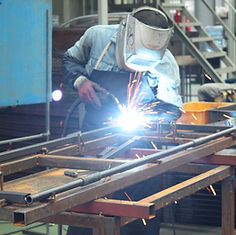
HELIUM
What Is Helium And Where Do I Use It?
-
Helium (chemical element with symbol He and atomic number 2) is a colorless, odorless, tasteless, non-toxic, inert, monatomic gas.
-
Helium constitutes about 23% of the mass of the universe and is thus second in abundance to hydrogen in the cosmos.
-
It is usually produced as a by-product of natural gas processing.
-
The helium that is present on Earth is not a primordial component of the Earth but has been generated by radioactive decay.
-
Helium is produced in the natural environment continually by the radioactive decay of uranium specifically within uranium and thorium-rich sedimentary sequences in the earth’s crust and escapes into the atmosphere.
-
Helium is used as a coolant liquid in cryogenics, as an inert gas atmosphere for welding metals, in the manufacturing of semiconductors and optical fibre cables, in rocket propulsion to pressurize fuel tanks, as a lifting gas, and in high-pressure breathing operations.
How Much Does It Cost?
-
The US Bureau of Land Management (BLM) started to sell crude helium from the federal helium reserve on the open market in 2005, at formula-driven price.
-
In fiscal year 2019, the price for crude helium to Government users was $3.10 per cubic meter ($86.00 per thousand cubic feet) and to nongovernment users was $4.29 per cubic meter ($119.00 per thousand cubic feet).
Where Is Helium Produced?
-
The world's supply of helium comes from the U.S., followed by Qatar, Algeria, Australia, Russia and Poland.
Specific Issues for Helium
-
Helium was assessed for the first time in 2017. After not appearing on the 2020 list, Helium was added again on 2023.
-
The EU is heavily reliant on imports of helium.
-
Since the concentration of helium in air is very minimal, extraction of helium from air is not economically viable. Helium is mainly extracted from helium-bearing natural gas.
-
Some uses, such as in cryogenics, purge and pressurization, rely on the unique properties of helium and therefore there are no existing alternatives.
-
Helium is listed in Annex IV/V of REACH and is exempted from registration.
-
Despite the current over-supply in the market, some significant developments are under development like Gazprom’s project to produce helium at the Amur Natural Gas Processing Plant in Siberia which is under construction. The plant will have a design capacity of 42 billion cubic meters of gas per year and will include the world's largest helium production facilities.
-
The future growth of helium is expected to be driven by demand from electronics manufacturers in China, South Korea, and Taiwan. Semiconductor manufacturing, flat-panel display manufacturing, and optical fibre manufacturing are all significant consumers of helium in Asian markets.
-
With high-tech manufacturing shifting to Asian countries, the U.S. and Western European share of worldwide demand is expected to continue to decline.
Applications

_ed.jpg)

